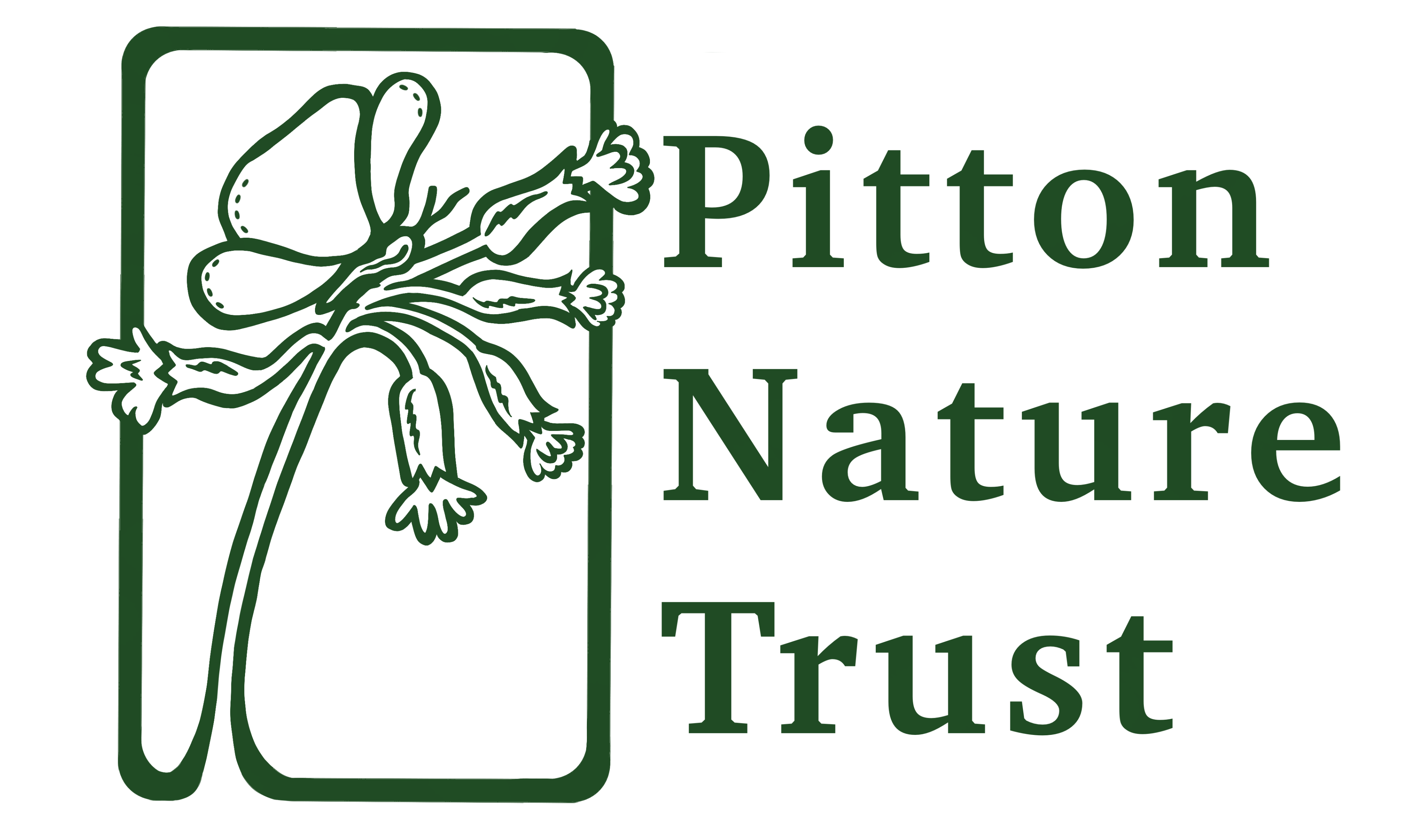During 2024 local resident Carole Smith has been conducting regular surveys of the butterflies in The Close. Here are some of her pictures and details of what she has seen.
Meadow Brown (Red List – Threatened)
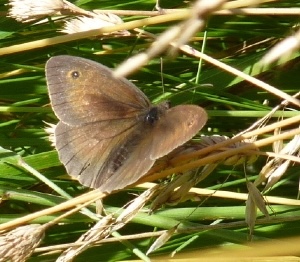
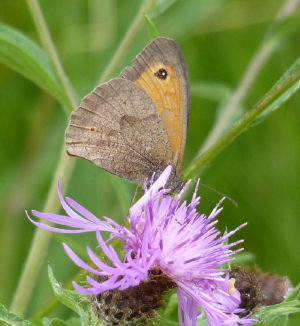
The Meadow Brown is a very common medium sized butterfly. Male and female are similar though the male is a little darker. Its caterpillars feed on a variety of grasses.
Note the tiny black spot on the closed hind wing, there are actually two spots but the top one here is very pale. Also the single white spot in the larger black ‘eye’ spot on the fore wing.
Gatekeeper (Red List – Threatened)
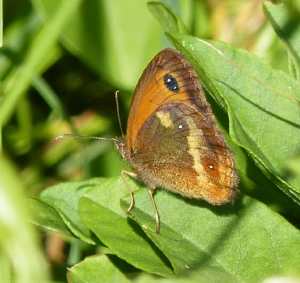
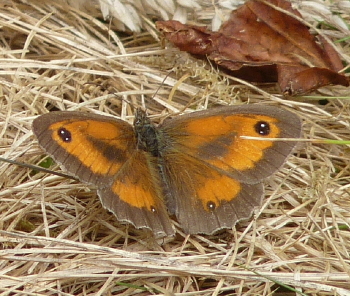
The Gatekeeper is common it is slightly smaller than the meadow brown. Males and females are similar. Caterpillars feed on the finer grasses such as Bent, Fescue and Meadow grass.
Note the two white spots on the outside of the hind wing and two white spots in the black eye on the front of the fore wing. You also often notice a flash of orange in flight.
Brimstone (Red List – Threatened)
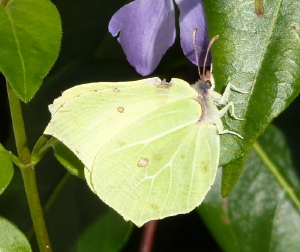
The Brimstone is a large butterfly. Male and female are similar though the males are a deeper shade of yellow. Caterpillars feed on Buckthorn.
Their yellow colour is very distinctive though females can look white in flight. The wing has an angular shape in order to look like a leaf and they usually rest with their wings closed.
Small White and Large White (Red List – Threatened)
These were generally just passing through and didn’t settle in the area so they were difficult to photograph and very hard to tell one from the other.
Small White (Red List – Threatened)
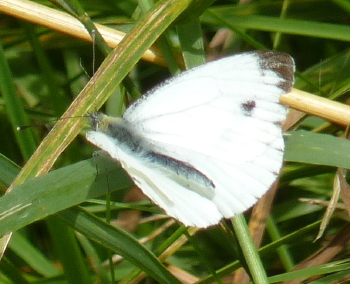
The Small White 48mm, has brilliant white wings, with small black tips to the fore wings and one or two wing spots. The undersides are a creamy white.
The caterpillars feed on Cabbage and other Brassicas but also on the following wild flowers: Charlock, Hedge Mustard, Garlic Mustard Hoary Cress and Wild Mignonette.
Large White (Red List – Threatened)
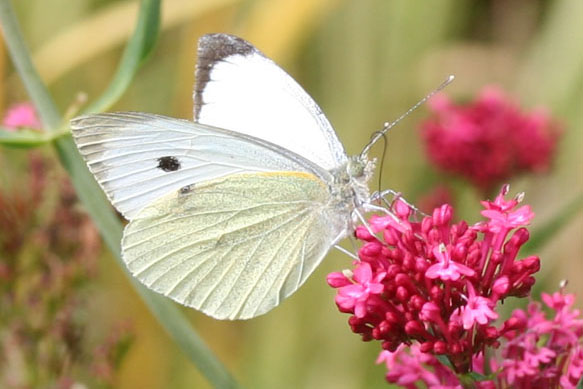
The Large White 63 -70mm, has brilliant white wings with pronounced black tips which extending down the wing edge. Females have two spots on the forewings which the males do not have. The undersides are a creamy.
The caterpillars feed on Cabbage and Brussel Sprouts and also Oil-Seed Rape.
Comma (Red List – Threatened)
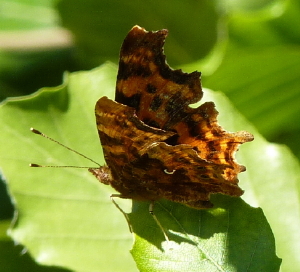
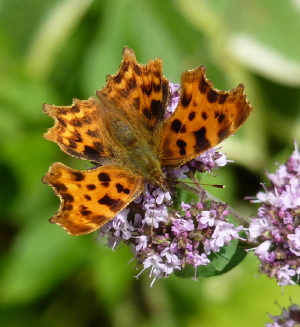
The comma is a medium to large butterfly. Males and females are the same. Its caterpillar food plant is the common nettle they will also feed on Hops, Elm, Currants and Willow.
This butterfly is a rusty brown colour with black spots and distinctive ragged looking wing edges. With the wings closed you can sometimes see its white mark which is in the shape of a comma. You can just see it in the first photograph.
Speckled Wood (Red List – Threatened)
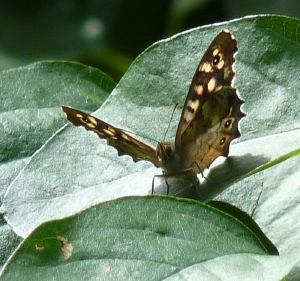
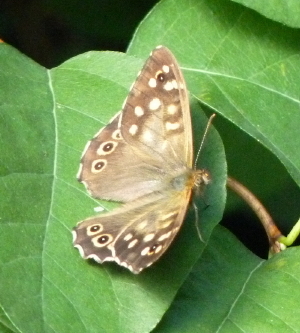
The Speckled Wood is a medium butterfly. Male and females are the same. Its caterpillar food plants are the following grasses: Cock’s-foot, Yorkshire fog, False Brome, Common Couch grass. It prefers woodland habitat but can be seen on the margins basking in the sun
Its is brown and speckled with cream spots. It has a row of eyespots on the trailing edge of the hind wing and a single one towards the tip of the fore wing.
Marbled White (Red List – Threatened)
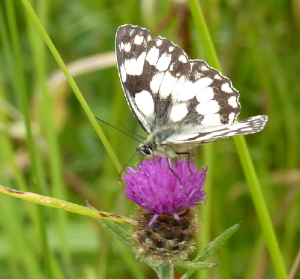
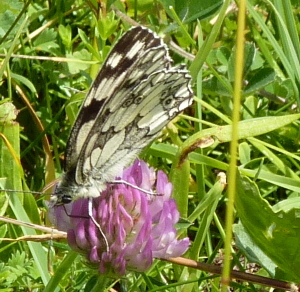
The Marbled White is a medium sized butterfly. The female is slightly more brown than the male. The caterpillars feed on grasses. Mainly Red Fescue but also Sheep’s Fescue, Yorkshire Fog and Tor Grass.
This butterfly is very striking being black with white spots like a chequered flag, The underside of the wings is paler looking more white with black lines and spots
Ringlet (Red List – Threatened)
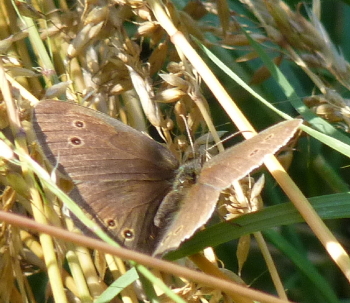
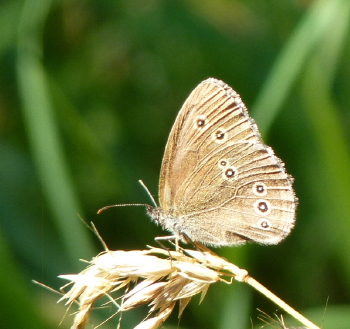
The Ringlet is a medium butterfly. Male and female are the same. It likes to feed on bramble and prefers damp grassland. It has a distinctive bobbing flight. Caterpillars feed on course grasses including Cock’s Foot, Meadow Grasses, False Brome and Common Couch.
Note this butterfly can look very similar to the male Meadow Brown the small eyes spots or rings which give it its name vary in appearance and can be very indistinct. When newly emerged it has a white fringe to the edge of the wings.
Common Blue (Red List – Threatened)
Common Blue Female
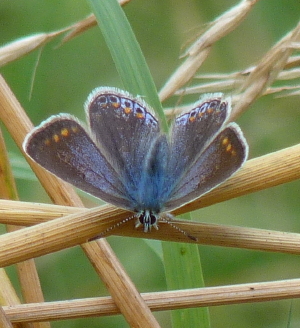
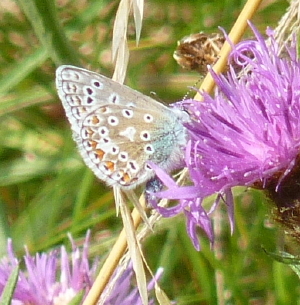
Common Blue Male (looking faded and ragged)
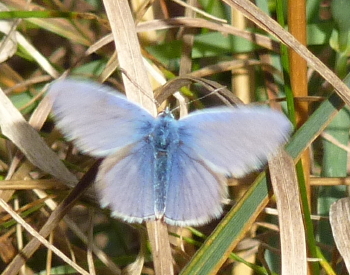
The Common Blue is a tiny butterfly. Male and females look different. The main caterpillar food plant is bird’s-foot trefoil though they will sometimes use Black Medic, Common Restharrow, and White Clover.
Note the females are mainly brown with some blue dusting on the body and sometimes on the wings. Males are blue. When fresh they have a white fringe with no bisecting black lines. The underside of the wings is distinctive and the configuration of the spots can be used for identification.
Brown Argus (Red List – Threatened)
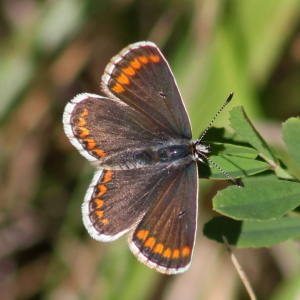
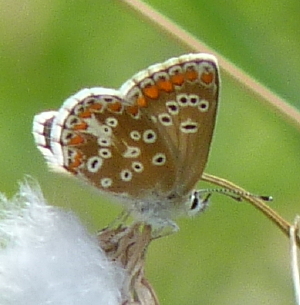
The Brown Argus is a tiny butterfly. It is a member of the blue family. Males and females are very similar. Its habitat is chalk and limestone grassland. Its preferred caterpillar food plant is common rock rose though it will use dove’s-foot crane’s-bill and other wild geranium.
Note it looks very similar to the female common blue. It can have blue dusting on the body but not usually on the wings. The orange spots on the fore wing are more distinct as is the black spot on the centre of the fore wing. On the underside of the wings there is a different configuration of spots with no lower spot on the front edge of the fore wing, and the upper two spots on the forward edge of the hind wing closer together.
